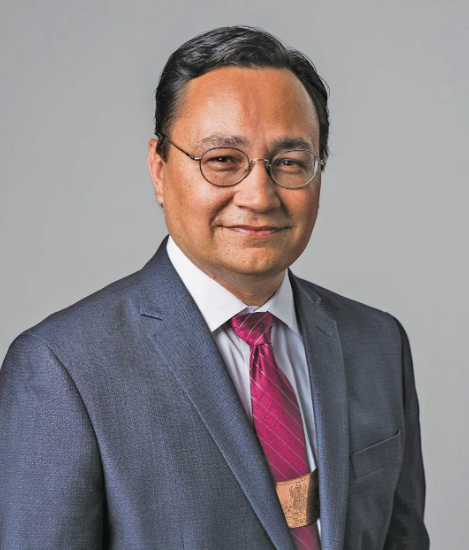
- Details
- By Chuck Hoskin Jr
GUEST OPINION. In rural northeast Oklahoma, the heart of the Cherokee Nation, a transformation is underway. The tribe has launched an $80 million project to build 15 new cell towers to fill gaps in broadband access across the 7,000-square-mile Cherokee Nation Reservation.
This visionary project will address immediate broadband needs and create lasting opportunities in health care, education and business development for Cherokee citizens and our neighbors in communities all over the reservation.
In today’s interconnected world, access to cell service and broadband internet is no longer a luxury; it is a necessity. Most Americans can take those connections for granted, but large parts of rural America and especially Indian Country have lagged behind. We can’t let our Cherokee communities wither on the vine from lack of access.
That’s why we are making the largest effort to improve broadband connectivity in the tribe’s history. We expect to have all towers up and running in about two years. This investment will bring new life and resources to the close-knit, rural communities where the Cherokee language is spoken and Cherokee culture is held most dearly. Families in these communities will no longer have to choose between staying close to their culture and participating in the wider world.
We’ve seen remarkable success already in Delaware County. Last year, we collaborated with AT&T to install a cell tower and provide reliable cell service in the Kenwood community. The beacon of hope that connectivity has brought to Kenwood serves as inspiration for the 16 communities slated for new cell towers in the next couple years.
The new towers will go up throughout Adair, Delaware, Cherokee and Sequoyah counties, with the network also crossing into parts of Mayes County. They will serve the communities of Belfonte, Bell/CC Camp, Brent, Brushy, Chewey, Christie, Dry Creek, Eucha, Greasy, Marble City, Oakhill/Piney, Oaks, Proctor, Tailholt and Vian.
The initiative goes hand in hand with Cherokee Nation's broader efforts to promote digital inclusion. Last year, we collaborated again with AT&T to establish the first Connected Learning Center in Catoosa. That facility – the J.W. Sam-Gadusi building – is providing internet access and educational tools to Cherokees and other Native citizens facing connectivity barriers.

Federal grants from the National Telecommunications and Information Administration’s Tribal Broadband Connectivity Program, the U.S. Department of Interior's Indian Affairs Office of Indian Energy and Economic Development, and funding from the American Rescue Plan Act (ARPA) have been instrumental in making this $80 million initiative a reality.
During the pandemic, when the need for reliable connectivity became so visibly amplified, Cherokee Nation responded by setting up drive-up Wi-Fi locations and distributing thousands of hot spots to students. This new work is simply the latest evolution of that commitment to connectivity. As we empower our rural and underserved communities, Cherokee Nation is building a brighter, more connected future for our citizens in northeast Oklahoma.
Chuck Hoskin. Jr. is the principal chief of the Cherokee Nation.
More Stories Like This
Superhuman. Should We Be Better Than We Are?Senator Ben Nighthorse Campbell Proved Representation Matters
The Lie We Keep Telling About Wounded Knee
Another Weapon of Mass Destruction
Colorado cannot heal until it confronts Sand Creek honestly
Help us defend tribal sovereignty.
At Native News Online, our mission is rooted in telling the stories that strengthen sovereignty and uplift Indigenous voices — not just at year’s end, but every single day.
Because of your generosity last year, we were able to keep our reporters on the ground in tribal communities, at national gatherings and in the halls of Congress — covering the issues that matter most to Indian Country: sovereignty, culture, education, health and economic opportunity.
That support sustained us through a tough year in 2025. Now, as we look to the year ahead, we need your help right now to ensure warrior journalism remains strong — reporting that defends tribal sovereignty, amplifies Native truth, and holds power accountable.
 The stakes couldn't be higher. Your support keeps Native voices heard, Native stories told and Native sovereignty defended.
The stakes couldn't be higher. Your support keeps Native voices heard, Native stories told and Native sovereignty defended.
Stand with Warrior Journalism today.
Levi Rickert (Potawatomi), Editor & Publisher

